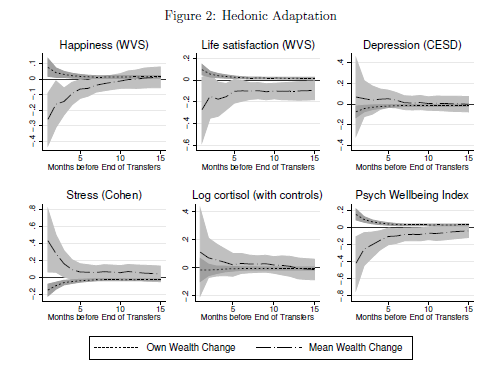Longtime readers of this blog (or anyone who has talked to me in the past few years) know that I have been working on a paper on risk compensation and HIV. Risk compensation typically means that when an activity becomes more dangerous, people do less of it. If the risk becomes sufficiently high, however, the rational response can be to take more risks instead of fewer, a pattern called “rational fatalism”. This happens because increased risks affect not only the danger of additional acts, but also the chance that you have already contracted HIV based on past exposures. While HIV testing appears to mitigate this problem, by resolving people’s HIV status, a similar logic applies for unavoidable exposures in the future; HIV testing cannot do anything about the sense that you will definitely contract the virus in the future. I test this model used a randomized field experiment in Malawi, and show that rational fatalism is a real phenomenon.
The paper is called “Scared Straight or Scared to Death? The Effect of Risk Beliefs on Risky Behaviors”. I’ve just completed a major overhaul of the paper – here’s a link to the revised version, which is now available on SSRN, and here is the abstract:
This paper tests a model in which risk compensation can be “fatalistic”: higher risks lead to more risk-taking, rather than less. If exposure cannot be perfectly controlled, fatalism arises when risks become sufficiently high. To test the model I randomize the provision of information about HIV transmission rates in Malawi, and use a novel method to decompose the risk elasticity of sexual risk-taking by people’s initial risk beliefs. Matching the model’s predictions, this elasticity varies from -2.3 for the lowest initial beliefs to 2.9 for the highest beliefs. Fatalistic people, who have a positive elasticity, comprise 14% of the population.
I’ve put the up on SSRN to try to get it into the hands of people who haven’t seen it yet, and also because I’m making the final edits to the paper ahead of submitting it to an academic journal. Therefore, feedback and suggestions are warmly welcomed.
I’ve written about previous versions of the paper both on this blog and on the World Bank’s Development Impact Blog.

